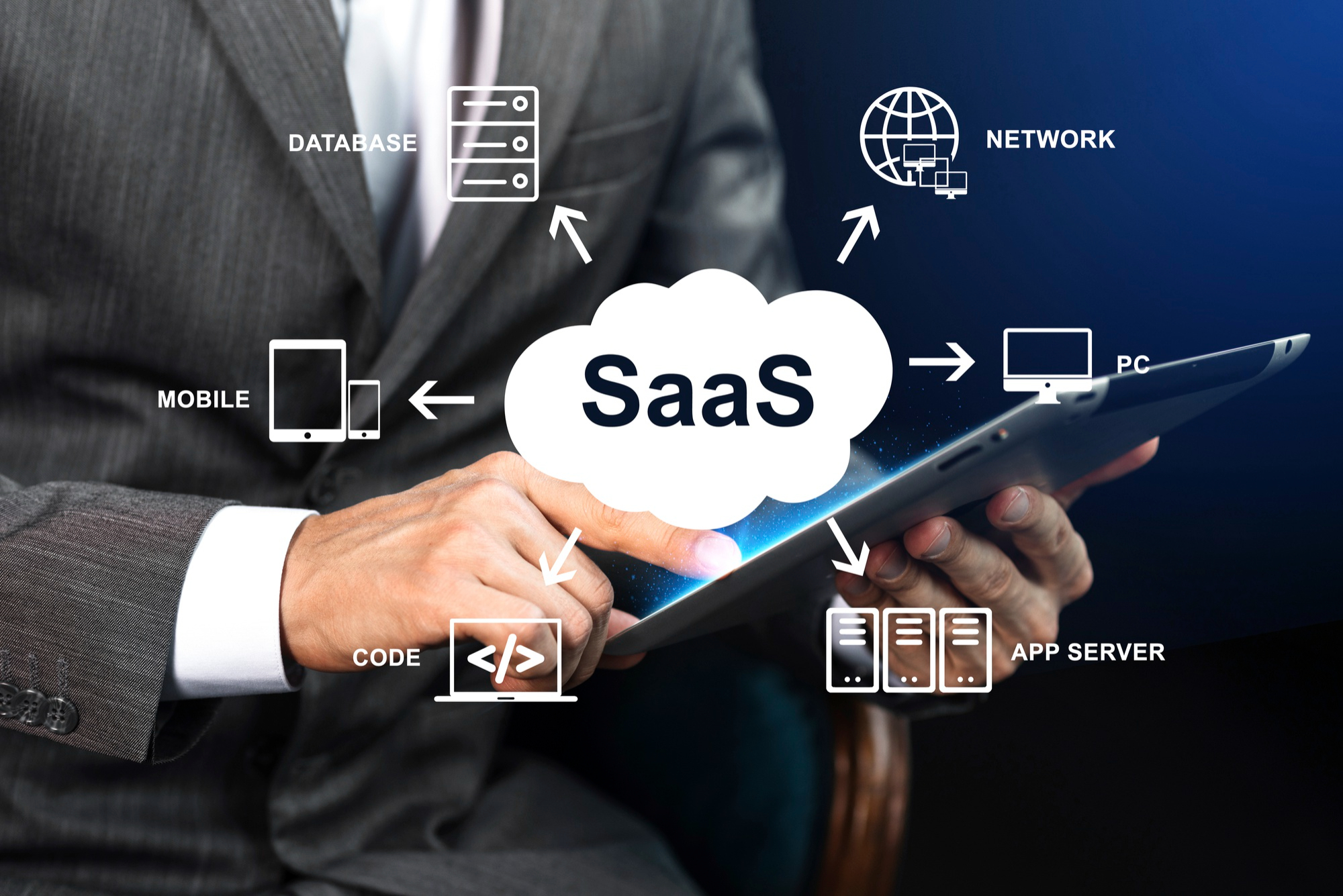Mastering SaaS Software as a Service in the Digital Age
Warning: Undefined array key 0 in /home/dmc/public_html/wp-content/themes/DMC/functions/helpers.php on line 752
Uncategorized
|
Aug 14, 2024
In the rapidly evolving digital landscape, Software as a Service (SaaS) has emerged as a cornerstone for modern businesses.
SaaS is revolutionizing the way companies operate, offering flexibility, scalability, and cost-efficiency that traditional software models cannot match.
To fully understand its impact, let’s delve into the definition of SaaS, explore real-world examples, and examine its critical role in digital business.
What Is Software as a Service (SaaS)
Software as a Service (SaaS) refers to a software delivery model where applications are hosted by a service provider and made available to customers over the Internet.
Unlike traditional software, which requires installation on individual devices, SaaS applications are accessible via web browsers, allowing users to work from any location with an internet connection.
This model shifts the responsibility of software management, updates, and security from the user to the service provider, offering a seamless and convenient experience.
Now that we’ve defined SaaS, let’s explore how its rise has significantly influenced the digital business landscape.

The Rise of SaaS in Digital Business
The adoption of SaaS has grown exponentially, driven by the need for agility, scalability, and cost-effectiveness in digital business. Companies no longer need to invest heavily in hardware or software infrastructure, as SaaS provides access to powerful tools on a subscription basis.
This shift has enabled businesses of all sizes to leverage advanced technologies without the burden of maintaining complex IT environments. Additionally, SaaS facilitates rapid deployment and integration, allowing companies to stay competitive in a fast-paced market.
With an understanding of its growth, let’s look at the specific benefits that SaaS brings to businesses.
Benefits of SaaS for Businesses
The SaaS model offers numerous benefits that make it an attractive option for businesses:
- Cost-Efficiency: With SaaS, companies pay for what they use, avoiding the high upfront costs associated with traditional software licenses.
- Scalability: SaaS solutions can easily scale up or down based on business needs, providing flexibility as companies grow or adapt to market changes.
- Accessibility: Users can access SaaS applications from any device with internet connectivity, promoting remote work and collaboration.
- Automatic Updates: Service providers handle all updates and maintenance, ensuring that businesses always have access to the latest features and security patches.
These advantages have made SaaS a preferred choice for organizations looking to optimize their operations while reducing costs and complexity.
After discussing the benefits, it’s important to consider how these translate into practical applications. Let’s explore some examples of SaaS in action.
Examples of SaaS Applications
SaaS is prevalent across various industries, offering solutions tailored to different business needs. Here are some popular examples:
- Customer Relationship Management (CRM): Platforms like Salesforce provide businesses with tools to manage customer interactions, sales pipelines, and marketing campaigns.
- Enterprise Resource Planning (ERP): Solutions like NetSuite allow companies to integrate and manage their core business processes, including finance, HR, and supply chain management.
- Collaboration Tools: Applications such as Slack and Microsoft Teams enable teams to communicate, share files, and collaborate in real time, regardless of their physical location.
- Accounting Software: Platforms like QuickBooks Online offer businesses a way to manage their finances, invoicing, and payroll through a cloud-based interface.
- Marketing Automation: Tools like HubSpot help companies automate their marketing efforts, from email campaigns to social media management, driving efficiency and results.
Each of these examples demonstrates how SaaS can streamline operations and enhance productivity in various business areas.
Understanding these examples gives us insight into the transformative potential of SaaS. Now, let’s delve deeper into how SaaS impacts business operations on a broader scale.

How SaaS Transforms Business Operations
The impact of SaaS on business operations is profound, offering transformative potential across multiple dimensions.
For example, SaaS solutions enable companies to implement sophisticated technologies such as AI and machine learning without the need for in-house expertise.
This democratization of technology allows smaller businesses to compete with larger enterprises by providing access to cutting-edge tools that were once only available to those with significant resources.
Furthermore, SaaS enhances collaboration and communication within organizations. By centralizing data and applications in the cloud, teams can work together more effectively, breaking down silos and fostering innovation.
The ability to access information in real time also improves decision-making, allowing businesses to respond more swiftly to market changes and customer needs.
While SaaS offers significant benefits, it also brings with it certain security considerations that businesses must address to ensure safe and secure operations.
What are the security considerations you need to know? read on the next lines…
Security Considerations in SaaS
While SaaS offers numerous benefits, security remains a critical concern for businesses. Since data is stored off-site and accessed over the internet, it is essential to ensure that the service provider employs robust security measures.
This includes data encryption, regular security audits, and compliance with industry standards such as GDPR or HIPAA.
Businesses must also consider the security of their own access points. Implementing strong passwords, multi-factor authentication, and regular user training can mitigate risks associated with unauthorized access or data breaches.
Choosing a reputable SaaS provider with a proven track record in security is crucial to safeguarding sensitive information.
With security in mind, it’s also necessary to address the challenges that come with adopting SaaS solutions.
Challenges of Adopting SaaS
Despite its advantages, adopting SaaS is not without challenges. Companies must carefully assess their specific needs and ensure that the chosen SaaS solutions align with their business goals.
Integration with existing systems can be complex, requiring careful planning and execution. Additionally, reliance on internet connectivity means that any disruption in service can impact business operations.
It is vital for businesses to have contingency plans in place and to select SaaS providers with high availability guarantees.
Another challenge is data ownership and portability. Businesses need to ensure that they retain control over their data and that they can easily transfer it if they decide to switch providers. This consideration is especially important for companies operating in regulated industries where data compliance is a critical issue.
Having addressed the challenges, let’s look towards the future and examine the evolving role of SaaS in digital business.
The Future of SaaS in Digital Business
Looking ahead, the future of SaaS in digital business is promising. The continued advancements in cloud computing, AI, and machine learning will likely lead to even more powerful and specialized SaaS applications. As businesses increasingly adopt a hybrid work model, SaaS will play a pivotal role in enabling seamless collaboration and remote work.
Furthermore, the rise of industry-specific SaaS solutions will allow companies to address unique challenges with tailored tools. These solutions will provide businesses with greater flexibility and precision in their operations, leading to improved outcomes and competitive advantage.
To ensure successful adoption, businesses must be strategic in how they implement SaaS solutions. Let’s explore how this can be done effectively.

How Businesses Can Effectively Implement SaaS
Now that we’ve discussed the benefits, examples, and challenges of SaaS, it’s important to understand how businesses can effectively implement these solutions. Successful SaaS adoption requires a strategic approach, starting with a clear understanding of business needs and objectives.
Companies should conduct a thorough analysis of available SaaS solutions, assessing their functionality, scalability, and integration capabilities.
Once a solution is selected, businesses should focus on training and onboarding to ensure that employees can use the software effectively. Continuous monitoring and evaluation are also key to optimizing the use of SaaS and making necessary adjustments as the business evolves. Finally, establishing strong relationships with SaaS providers can help businesses stay informed about new features, updates, and best practices.
Having explored the implementation strategies, let’s wrap up our discussion with a final reflection on the importance of SaaS in the modern digital landscape.
Conclusion
Software as a Service (SaaS) has become an integral part of the digital business ecosystem, offering unparalleled flexibility, scalability, and cost-efficiency. By understanding the definition, benefits, and challenges of SaaS, businesses can make informed decisions about adopting these solutions to drive growth and innovation.
As technology continues to advance, SaaS will undoubtedly play an even more significant role in shaping the future of business, providing companies with the tools they need to succeed in a competitive landscape.
By strategically implementing SaaS solutions, businesses can not only optimize their operations but also position themselves for long-term success in the digital age.
Warning: Undefined array key "sidebar_ads" in /home/dmc/public_html/wp-content/themes/DMC/functions/helpers.php on line 824




